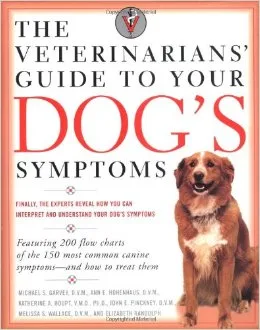Did you know that you don’t always have to take your dog to the vet in order to get a veterinarian’s diagnosis (and maybe even meds) for your dog’s minor health issues?
It’s true.
With any non-emergency doggie ailment, you generally have 3 options:
1. You could call the vet’s office & ask your question over the phone.
2. You could take a sample of your dog’s pee or poop (or vomit) to the vet.
3. You could take your dog to the vet or an after-hours pet emergency center.
Here’s what you need to know about each option…
#1 – Call the vet’s office & ask your question over the phone.
Here’s my best tip: Don’t ask a bunch of panicky questions. If you do, they won’t be inclined to help you over the phone. They’ll just tell you to come in for a visit.
Instead, simply give the person who answers the phone a quick 1-2 sentence explanation of what’s going on. No more, or they’ll have to take too many notes and may not be able to translate the problem accurately to the doctor. Besides, if they’re confused by what you’re telling them or have to ask more questions, you can bet the doctor will simply say: “I need to see the dog. Please schedule an appointment.”
When you call the vet for advice, you won’t be able to get all of your questions answered over the phone, so don’t even try. But you should be able to get a sense of the urgency of the situation. You will also have a better understanding of your options and what you should do next.
Sometimes, they do need to actually see your dog in order to properly diagnose what going on. But 9 times out of 10, I am able to have questions about my dog’s (minor) health issues answered over the phone!
I am forever thankful to veterinarians who offer this type of service for their clients. This little bit of convenience and extra attention goes a long way at keeping our dogs happy, healthy, and well cared for. And it keeps me returning to that same vet year after year when my dog needs annual shots, antibiotics, or other things that require a visit to the vet.
#2 – Take a sample of your dog’s pee or poop (or vomit) to the vet for testing.
Yep, unless your dog is showing obvious signs of distress (or has a lack of appetite or acts lethargic), then there may be no need to actually take your dog to the vet in order to receive a diagnosis of what’s causing the sudden change in peeing or pooping.
Only a phone call to your vet will determine for sure. (Just be sure to ask if you can bring in a sample for testing, instead of bringing in the dog.)
After leaving the pee or poop sample with the vet, you simply go along with your day and wait for a phone call from them (usually within a few hours). The vet may then be able to offer a preliminary diagnosis (without having actually seen your dog), based on the lab test results which can show whether parasites, bacteria, etc. are present in your dog’s sample.
In most cases, the vet will then prescribe and dispense some medications for your sick puppy. If an examination of your dog is necessary, the vet will request that you set up an appointment at this time. But in my many years of having dogs, more times than not, I have been able to swing by the vet to pick up some doggie meds, without them ever having to see my dog.
TIP: One of the first questions they’ll ask over the phone (before diagnosing your dog’s condition and prescribing treatment) is: “How is your dog’s energy level? Is your dog less active than usual? Is your dog eating more or less?”
Just know that if your dog is behaving differently from usual, a pee or poop or vomit sample alone is rarely enough to make a diagnosis. Changes in behavior are a sure sign that something more serious is going on, and chances are the veterinarian will actually need to see your dog to make an accurate diagnosis. In some cases, if your dog’s condition is really poor, the vet may need to administer fluids — either through a shot or intravenously — in order re-hydrate your dog and get him back up to speed faster than they could recuperate on their own.
How to take a sample of your dog’s pee or poop to the vet…
Remember, this really only works if your dog has pee or poop issues and your dog isn’t showing any obvious signs of distress, lethargy, or lack of appetite.
When I worked at the vet, the most common times we recommended that someone simply drop off a sample of their pet’s urine or poop were:
- When your pet has diarrhea
- When you notice blood in the dog’s poop
- When you notice worms in the dog’s poop
- When there’s been an obvious change in frequency or amount of your dog’s poop
- When the pet has been straining to urinate
- When you notice blood in the dog’s urine
- When there’s been an obvious change in frequency or amount of your dog’s urine
Many times (but not always), the issues which cause these symptoms can be diagnosed — and often treated — without the vet even having to see your dog. All he or she needs is a sample of your pet’s pee or poop.
Of course, based on the lab results after testing your dog’s sample, your vet may still need to see your dog in order to properly diagnose or treat your pet. But if your dog is having a pee or poop issue and you get a head-start by taking a sample to your veterinarian’s office first, then at least you’ll be one step closer to knowing what’s going on with your pet. And, chances are, your veterinarian will be able to get your dog on the road to recovery faster than if you had waited another day (or longer) to see the vet in the first place.
#3 – Take your dog to the vet or an after-hours pet emergency care center.
When you have questions about your dog’s health, you typically want to get an answer… fast!
Sure, you can search online and try to take care of the problem yourself, but you really need to know when to call the vet immediately and when it’s okay to try a home remedy first.
Here are the times when you need to take your dog to the vet… right away!
If your local vet’s office is closed (or you’re traveling away from home), then you need to find an after-hours pet emergency hospital for evenings, weekends, holidays.
Before you go to the vet or after-hours center…







